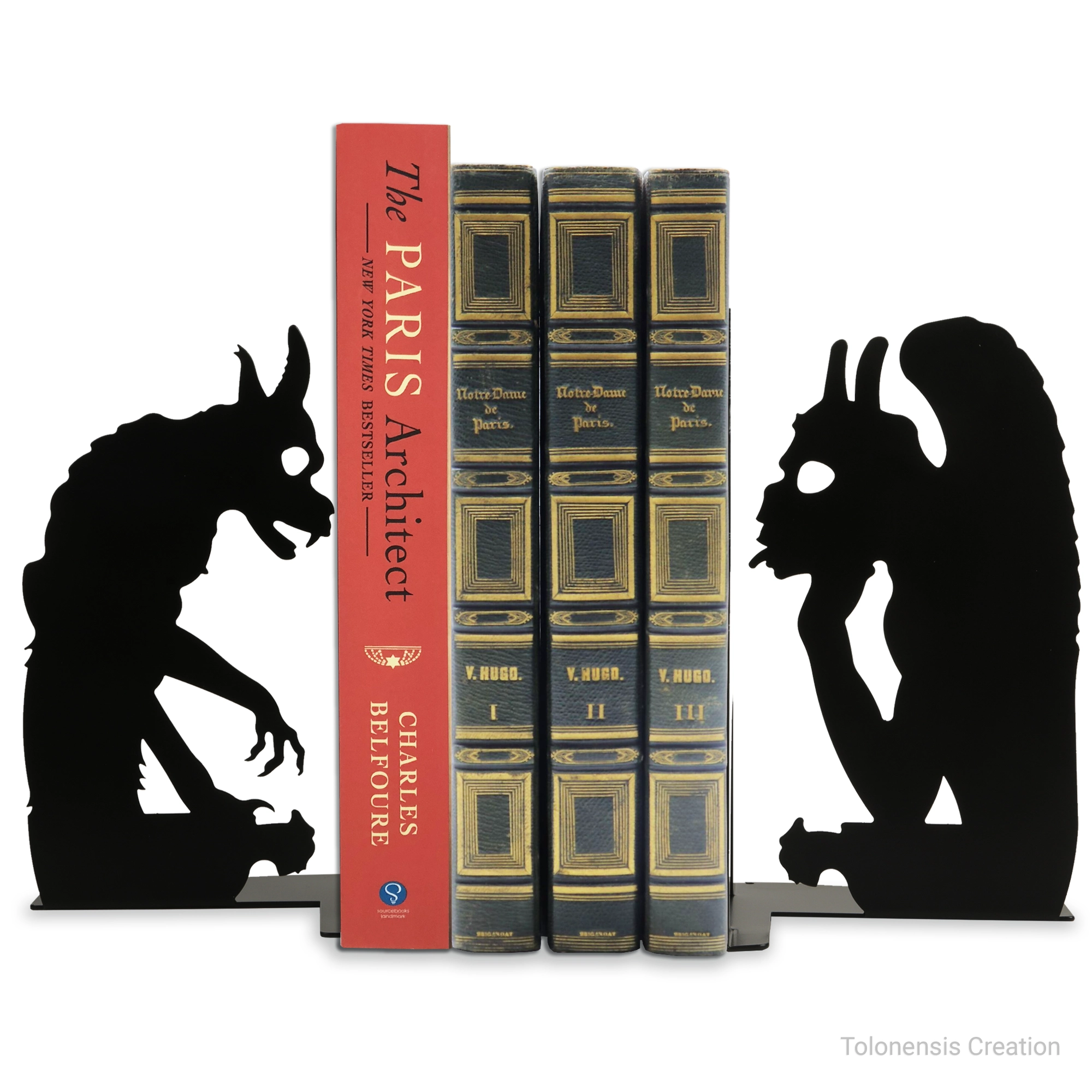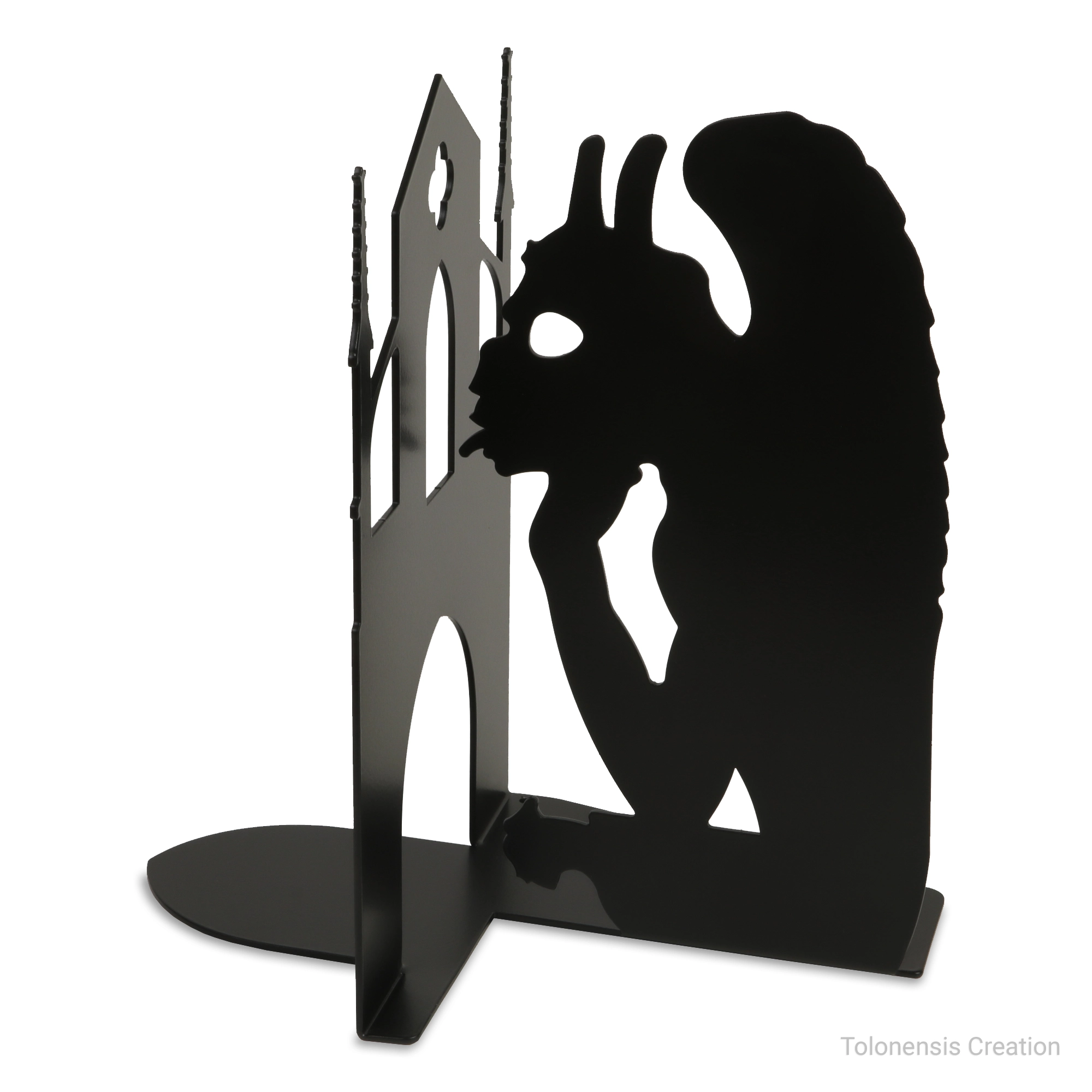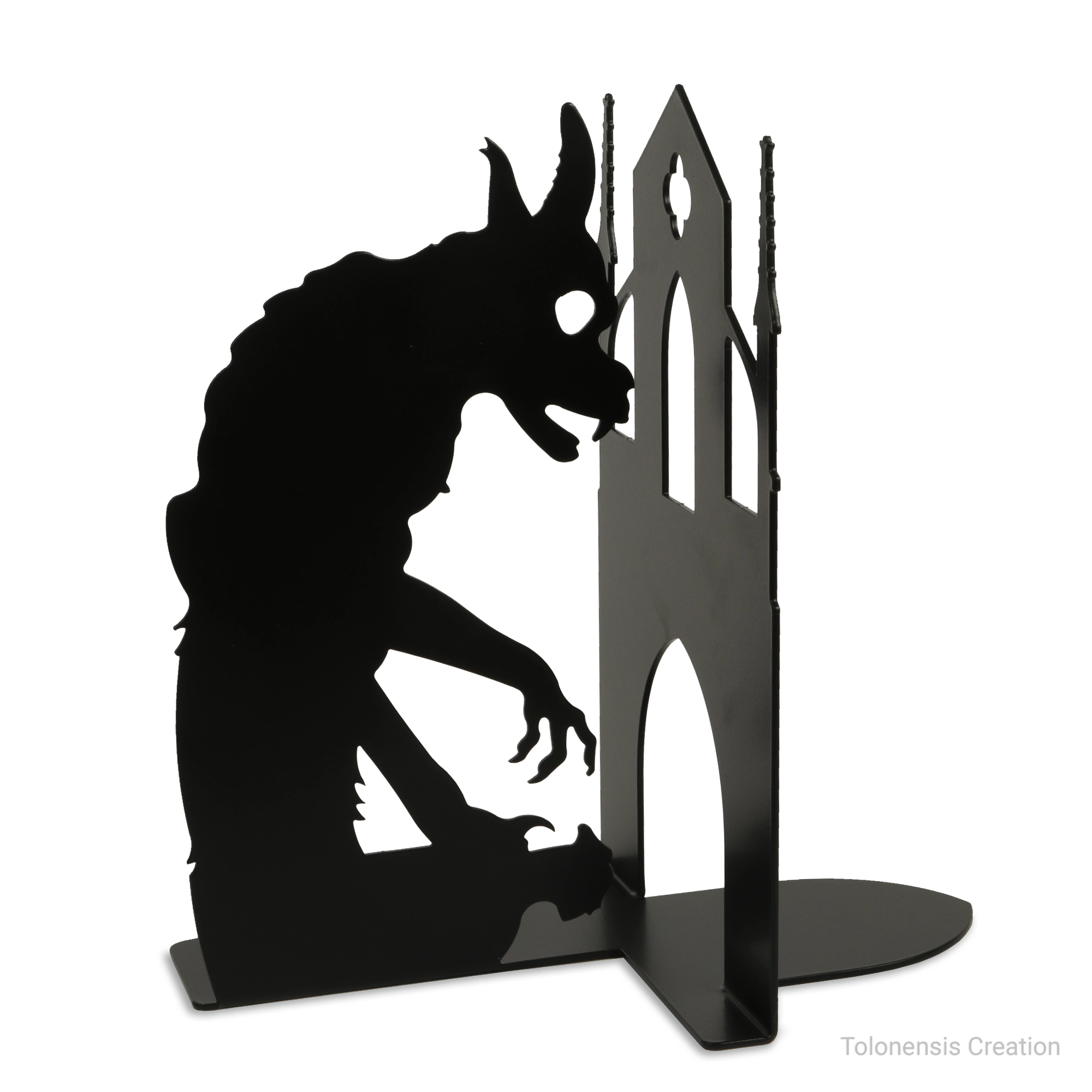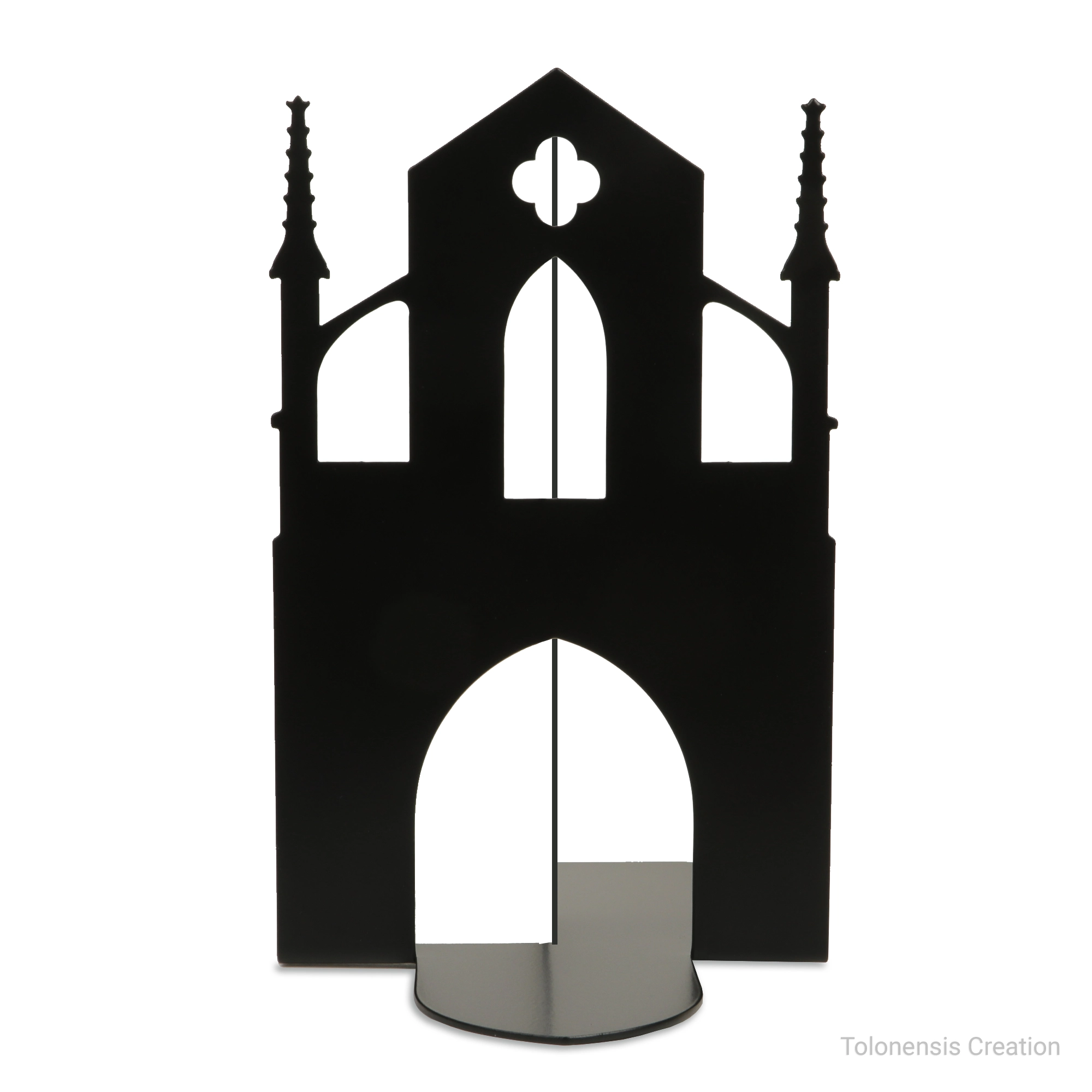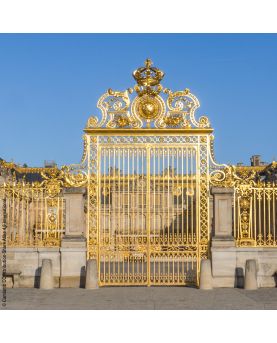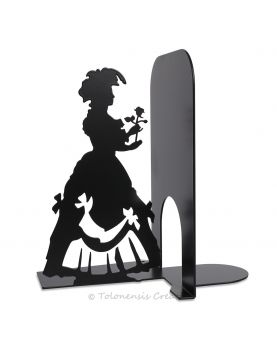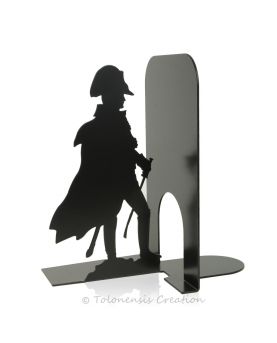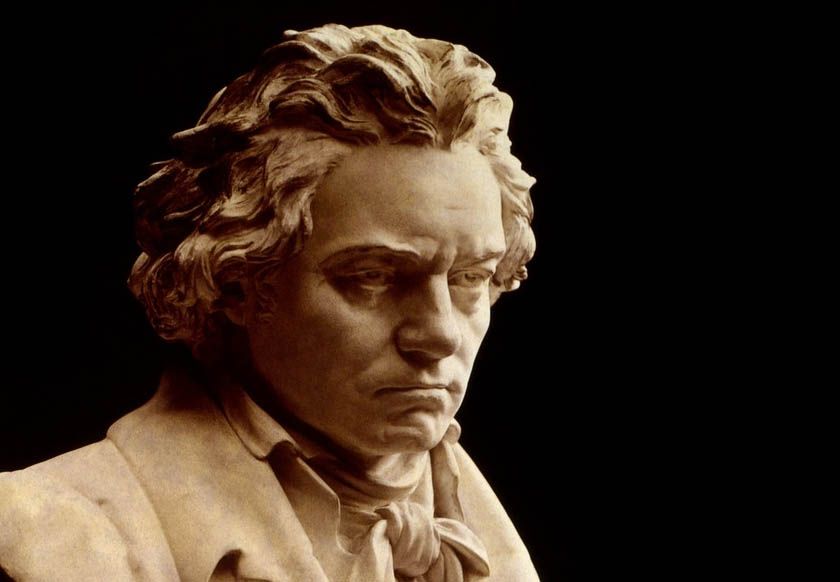- Out-of-Stock

Bookends Notre-Dame de Paris Strix and Chimera
A beautiful set of original bookends on the theme of chimeras, the famous sculptures of Notre-Dame Cathedral in Paris.
🖐 Manufactured using laser cutting on metal.
📐 Dimension: 19 x 18 x 12 cm (Height x Length x Width)
7.5 x 6.9 x 4.3 Inch.
🎨 Powder coating painted.
✔️ The bookends are packaged in a dedicated offset-printed box.
♻️ This creation is made entirely with recyclable materials.
Choose my free bookmark!
- Shipping
-
For the European Union, shipments are made by UPS or DPD carriers, depending on the destination.
For European countries outside the EU and other countries, shipments are handled by the Post Office in priority mode.














